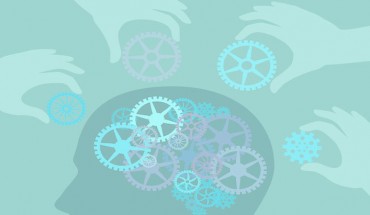The effect of metabolic syndrome traits on atherosclerosis can be reduced by increasing cardiorespiratory fitness already in childhood:
The deleterious effects of metabolic and cardiovascular risk factors on arterial health can be reduced by increasing cardiorespiratory fitness already in childhood, a new study suggests. The study also found that the traditional way of investigating whether excess body fat relates to poor arterial health may be insufficient in understanding the biology of disease, because better arterial health was associated with higher fat mass in children.
Researchers from the University of Eastern Finland, the University of Exeter, and the University of Bristol carried out the study using data from one of the world’s most extensive ongoing prospective birth cohort studies – The Avon Longitudinal Study of Parents and Children (ALSPAC).

Metabolic disease and atherosclerotic cardiovascular disease are among the world’s main causes of death. The paucity of evidence on the mediating role of cardiorespiratory fitness on the associations of cardiometabolic risks with atherosclerotic cardiovascular disease risks in the young population warranted this novel study, which was conducted among more than 5500 British children and adolescents, aged 9 to 11 years. Cardiometabolic risk comprised of elevated blood pressure, abnormal blood lipids and high body fat. The study found that increased cardiorespiratory fitness was associated with a reduction in the adverse effect of cardiometabolic risk factors on arterial elasticity and stiffness by 4 – 12% after controlling for other risk factors. Theoretically, this implies that for every 100 children who could develop atherosclerosis from metabolic syndrome, about 4 – 12 children may avoid atherosclerosis due to high cardiorespiratory fitness.
“This result may have clinical and public health significance since the studied population was apparently healthy but it needs to be replicated in a population with a high prevalence of obesity and metabolic diseases, and in prospective studies. If the findings from such studies are consistent, it would suggest that enhanced cardiorespiratory fitness from childhood could prevent an altered cardiovascular effect of metabolic syndrome in later life,” says Andrew Agbaje, a physician and clinical epidemiologist at the University of Eastern Finland.
“These data add to a growing body of evidence highlighting the importance of providing children with opportunities to develop their physical fitness. This can be achieved by meeting physical activity guidelines for health, which encourages children to reach 60 minutes of physical activity at a moderate to vigorous intensity on a daily basis. Children should be provided with opportunities to accumulate activity across the day” says Alan Barker, an Associate Professor of Pediatric Exercise and Health at the University of Exeter.
Researchers found a two-way connection between arterial health and fat mass
Another key finding from this study is that the usual approach for studying the adverse effect of fat mass on arterial health in a single direction might have led to insufficient knowledge on the biology of arterial physiology and disease since the reverse association has been largely overlooked. The researchers found that increased arterial stiffness in children was associated with reduced general or central adiposity and better endothelial function was associated with higher adiposity. These results remained consistent after accounting for factors such as age, sex, puberty, systolic blood pressure, socio-economic status, total fat mass, cardiorespiratory fitness, low-density lipoprotein, and the diameter of the brachial artery.
This finding can be described as an ‘arterial paradox’ in which healthy arteries in children and adolescents seem to promote higher fat mass, albeit healthy fat since less than five percent of the study participants were obese. “Hence, it is important to prospectively investigate whether this ‘arterial paradox’ continues into early adulthood, especially in the same population,” says Dr Agbaje.
The collaboration allowed a new approach to the ALSPAC data, which was analysed at the University of Eastern Finland. “To me, this is a very nice example of the benefits of international collaboration and efficient use of accessible datasets,” says Tomi-Pekka Tuomainen, Professor of Epidemiology, University of Eastern Finland.
The findings were published in Medicine and Science in Sports and Exercise and abstracts were presented in several international congresses. This research was supported in part by research grants from the Jenny and Antti Wihuri Foundation, the Finnish Cultural Foundation Central Fund, the Finnish Cultural Foundation North Savo Regional Fund, and the Doctoral Programme of Clinical Research, Faculty of Health Sciences University of Eastern Finland. The UK Medical Research Council, the Wellcome Trust, and the University of Bristol provided core support for the ALSPAC study. The figure was created with Biorender.com
- Gut microbiome could delay onset of type 1 diabetes - 3rd April 2025
- The da Vinci 5 Robot Is Set To Transform Bariatric Care: - 31st March 2025
- Beyond money: the hidden drivers fuelling child food insecurity - 31st March 2025






